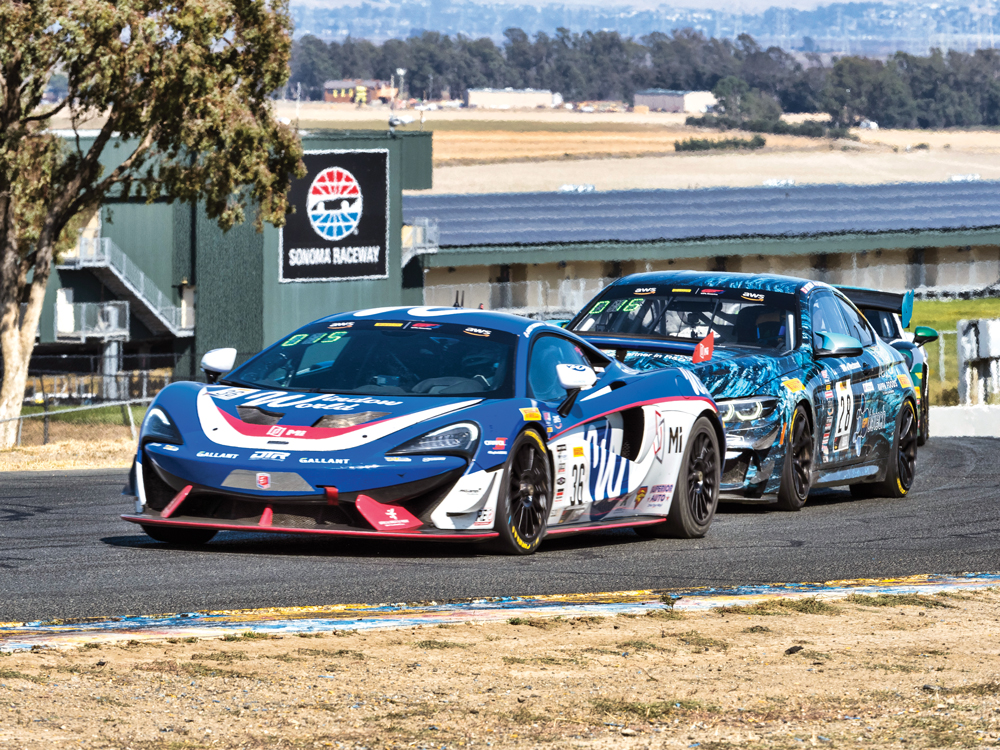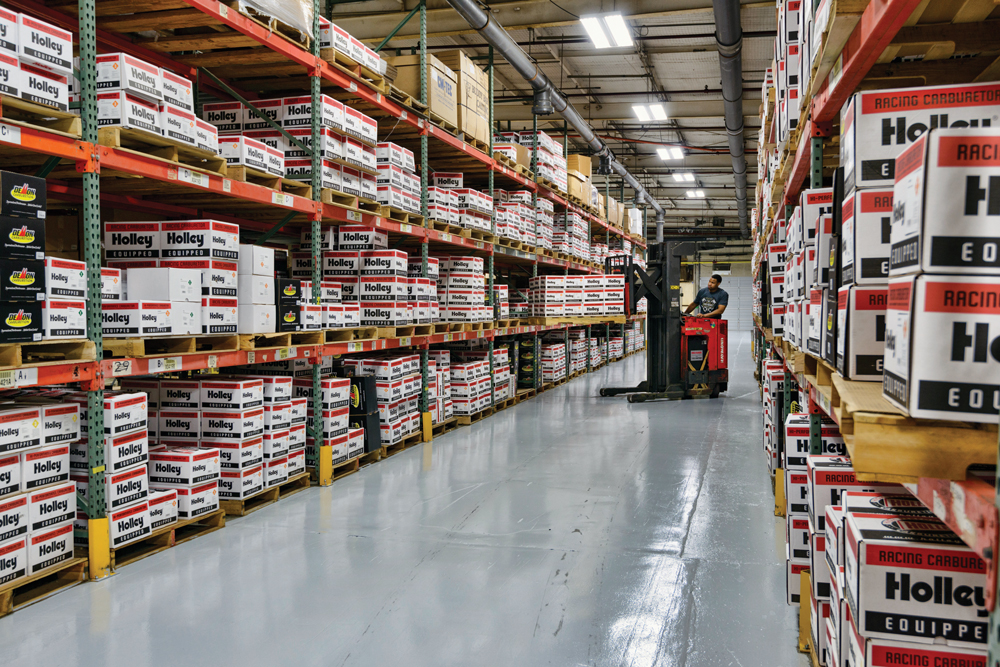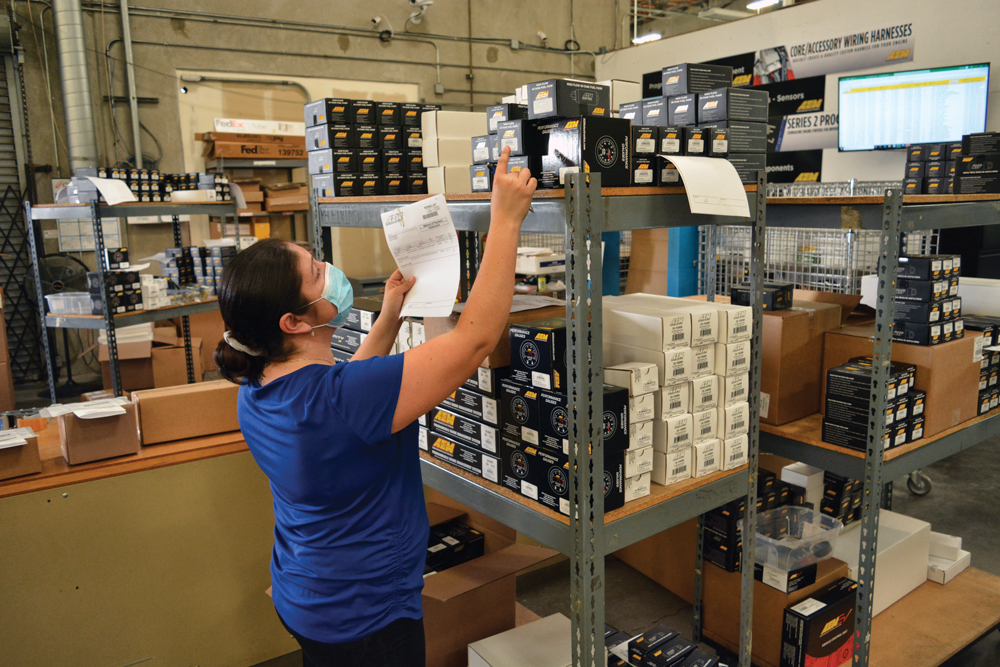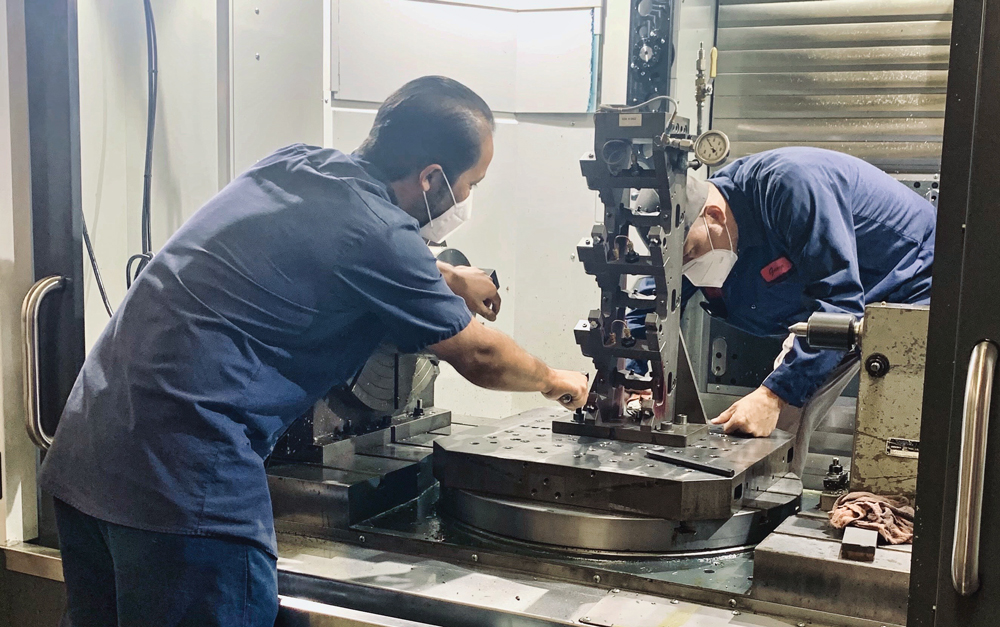INSPIRED LEADERSHIP

Bob Sargent, Track Enterprises
The pandemic has brought fear, uncertainty, and even conflict to the workplace, yet many companies are thriving thanks to strong and steady management.
“The pessimist complains about the wind. The optimist expects it to change. The leader adjusts the sails.”
—John Maxwell, based on a quote from William Arthur Ward
There’s no mistaking that the global COVID-19 pandemic is a different kind of crisis, one that is testing the leadership skills of management, regardless of the company size.
“It’s definitely a challenging time, but this business has always been a challenging one,” reminded Bob Sargent of Track Enterprises, a racing promotion company based in Macon, Illinois. The firm operates a number of dirt-racing facilities in the Midwest and works with numerous sanctioning bodies. “It’s added more responsibilities and workload to what we already had.”
With conflicting medical advice, clashing political parties, and contrasting state/local policies initiated to stem the spread of the virus, leaders are hard pressed to maintain employee morale and adapt where needed to keep the company running. One analogy has likened the current situation to an Indy 500 race.
“The year started off cruising, turning great laps in a finely tuned car. Then COVID hit, and immediately the track turned from a gripping asphalt to gravel,” said Bob Coakley of Upgrade Performance, San Clemente, California. “You’ve got a race car not equipped for this. You have no choice, since you have to finish the race. So, in the middle you make adjustments in order to survive. The leaders and teams that can adapt and deal with adversity will finish.”
“Anybody can be a leader during great times,” added Barry Moltz, a small-business consultant and author based in Chicago, Illinois. “It’s when things get difficult, that’s where it’s hard to lead. And during times of crisis, people are looking to management to lead and give them direction in how to adjust to the new normal.”
Beyond bringing economic uncertainty into the workplace, the pandemic caused a real fear for employees’ lives. Management was fighting the battle on two fronts—keeping the business going and making changes to prevent the virus from infecting workers and customers.
“The biggest thing to overcome was fear,” said Jason Bruce of Holley Performance Products, Bowling Green, Kentucky. “Most people struggle with change, anyway, so this was a very hard lesson. Dealing with people’s fears boils down to stepping up your communication game.”
Holley employs more than 1,500 workers spread out over numerous states. By September, only a handful of employees had tested positive, and all had light or no symptoms. Many of the cases were traced back to households where a health-care worker brought the virus home.
“Early on, our CEO Tom Tomlinson drafted a memo allowing work from home, and senior managers were empowered to make decisions on the fly,” Bruce added. “So, we weren’t hanging things up in committee.”

With Holley based in multiple locations around the country, managers had to deal with different local agencies and abide by rules set up for safety, disinfection, and social distancing.
“Our operations teams made sure that enough supplies were available. They even took care of little things, like getting foot latches for bathroom doors to avoid hand contact,” Bruce said. “These are things I never would have thought about, but our operations group did a really great job.”
Jim Bingham of Winner’s Circle Speed and Custom in Joliet, Illinois, didn’t have a dedicated operations team to guide his workplace response. He brought in a carpenter to build isolation rooms at his stores that allowed his staff to wait on two customers at a time without actually letting them inside the store.
“At first, we thought sales would fall off, but the opposite has happened,” said Bingham. “Business is stronger than ever, and I think it’s because the government dropped $2 trillion into the economy.”
Most segments of the automotive aftermarket are keeping pace with past sales numbers, or improving them. This dynamic follows other industries such as home improvement, which is thriving as stay-at-home orders prompt homeowners to repair or upgrade their residences.
“Everybody was bored sitting home,” explained Chris Holbrook of Holbrook Racing Engines, Livonia, Michigan. “They wanted to get their hot rods running and go racing again.”
Holbrook has just five employees and had to make targeted changes to his operation to keep the shop running. All customers have to make appointments—there are no walk-ins. Hand sanitizer is plentiful around the shop.

“In the beginning, everyone was in panic mode,” recalled Holbrook. “Our state shut down quickly. We were down for five weeks. Finally, it was either we figure out a way to go back to work or we won’t have any jobs.”
Holbrook’s shop hasn’t had any COVID-related health issues, and business is strong as previous orders are completed and new ones come in. He said there was no hesitation on the part of the employees returning. But other shops haven’t been as fortunate. One shop in Texas, speaking off the record, had a number of employees fail to return because the government unemployment benefits were so generous that workers simply didn’t feel like working again. Openings for replacements drew only one application until rumors that the benefits would expire circulated. Then the shop received dozens of applications.
In a different twist, some employees chose to stay home not out of laziness, but because they were considered at high risk for the virus. It’s that kind of situation where management has to be considerate. In fact, experts will stress empathy as a necessary leadership quality in a crisis.
“Empathy is very important,” said Christine Corelli, a workshop facilitator and business author based in Chicago. “The employees are looking to upper-level executives, not just managers, to be visible. You have to be transparent, and you have to be totally and completely honest. Sometimes you have to bare your soul about your own concerns.”
“I think most managers think they’re good at communicating, yet many are not,” added Bruce. “When you’re dealing with significant fear from the workers, I know personally my empathy for the staff has grown and so my communication approach has changed. It’s coming more from a position of love than tasks and grind.”
Working with the employees to map out a strategy certainly proved successful at Scat Enterprises in Redondo Beach, California. Tom Lieb leveraged the trust he’d built up with several longtime employees to offer a plan and share that plan with the workforce.
“Everybody has a different management style, and the personality of the company can reflect the personality of the management,” said Lieb. “Personally, I’m a hands-on guy. I’ve never asked anybody to do something I wouldn’t do myself. That gives me somewhat of an advantage with the employees.”
When the virus hit, Lieb pulled his employees together and told them there were choices to be considered, but shutting down the company wasn’t an option. Scat also was tagged by state officials as an essential business, which allowed it to remain open.
“But I told everyone I needed their cooperation,” said Lieb, noting that he had to establish rules on face masks, cleanliness, conduct, and social distancing. “We may have to cut back a little bit, but you need to know that whatever happens I’ve got your back.”
Scat relies on Chinese sources for its raw castings and forgings, which are then machined and heat-treated in the US. Several of his suppliers sent large shipments of masks and hand sanitizer to company facilities.
“It was completely unsolicited,” Lieb added. “There were notes saying that the suppliers knew we were going to need it. They sent it because they were concerned about us. Our business is healthy because we did what we had to do to keep the lights on. We have expenses, and our customers were depending on us. Based on that, the employees knew I was stepping up for them, and they knew they needed to reciprocate.”
Even though California initiated some of the nation’s toughest safety protocols, Sonoma Raceway was able to bounce back from a two-month stretch of cancelations and postponements to resume a fairly normal operating schedule, albeit without spectators.
“We’re now fully booked through the fall,” reported Steve Page. “We’ve been up and running since the second week of June, but purely with participant-only events. The demand is there.”
The track did have to reduce staff in the spring, but getting the employees back to work was not a struggle. “We’ve had very little resistance. Folks are happy to have the track open, [so] putting on a mask is a pretty small sacrifice,” said Page, who will be retiring at year’s end.

Sonoma County health officials established safety guidelines, including masks, social distancing and single passengers. The latter forced the cancelation of some high school learning programs that involved multiple passengers. When the pandemic started spreading and the track was closed beginning in late March, Page put a number of policies in place to keep the facility operational and as many employees as possible on the payroll.
“It was a huge challenge,” he said, noting the facility’s team continued to maintain the track during the down time. “I had a company-wide directive that if you can work at home, you do work at home. Meanwhile, the facility’s team continued to maintain the track. But the office was a ghost town.”
As with many companies across the industry, video conferencing and working from home became the norm.
“Typical call rooms would have been hard to manage with social distancing. We had to turn 180 degrees and allow people to work from home,” said Bruce. “A year ago, we would have said that could never happen, and it ended up working out great. People were able to manage their fears a little better.”
However, that alternative has its own challenges for leadership.
“You have to learn how to make eye contact on video,” said Corelli. “Employees are not used to seclusion.”
“You don’t have the day-to-day personal interaction,” agreed Page. “I don’t think anyone is feeling the sense of camaraderie is near what it would be under normal circumstances. But we push to maintain as much interaction as possible and a sense of common purpose.
“There’s no magic bullet,” he continued. “It’s communicating as often as possible and reminding people that this is an adrenaline-fueled business. If you don’t have the energy of major events and buzz of the crowd, it’s easy to become untethered to the purpose of why you’re here. Myself and management worked to remind everyone what motivates in the first place.”

Working remotely places added pressure on different employee levels, but experts maintain that providing clear direction and demonstrating trust will go far in reaching objectives.
“Distribute the leadership,” advised Moltz. “Not everyone is in one place anymore, so the span of control is harder. If people understand the objectives and you tell them what needs to be done, they can figure out how to do it. If people have more control about how it gets done, there’s more of a chance they actually do it.”
“Give employees expectations,” agreed Bruce, “and more often than not they will work to exceed them.”
“We share a lot of responsibilities, but it still comes back to me and my staff to make sure everything is in place,” countered Sargent.
Even if management sets a strong plan in place and the employees are on board, shops oftentimes are dependent on outside suppliers—many of which may be behind on filling orders due to employee challenges, or because the state has shut them down.
“Where we’ve struggled is getting the parts,” noted Bingham. “Large companies that canceled POs early on are just now trying to get caught up. Our strategy is to have plenty of inventory and employees who know what they’re doing.”
ADDRESSING UNCERTAINTY
This is a crisis that, unfortunately, will continue to throw curveballs at leadership. One-time catastrophes like a fire or destructive weather can be dealt with almost in a routine manner because there’s precedent to help guide decisions and expertise to assist in the recovery. This pandemic, however, feeds off its own uncertainty and can create conflicts that managers never expected.
“There’s very little trust and many mixed messages in the media,” warned Corelli. “If people disagree with a position, or an issue or a political party—instead of respecting another opinion, all of a sudden you are an enemy. Now there’s additional conflict, and leaders have to know how to manage that.”
“In a time when workers are struggling to understand or grasp where things are going, if you don’t provide them with real facts and data, they will always catastrophize the situation and make the absolute worst possible scenario come true,” said Bruce. “So, it’s important to communicate verbally and not through email or some stale memo.”
Moving forward, leaders can be optimists, but they also need to accept and communicate reality.
“I expect the numbers to keep rising until there’s a vaccine,” insisted Bingham.
“The relationship you have with your employees will determine how successful you’ll be,” added Lieb.
The ongoing crisis is peppered with reports of spikes in active cases and fears surrounding large gatherings. Much is still unknown about the coronavirus, and relief in the form of a proven vaccine remains a debate between medical authorities. This continued uncertainty may lead to a possible “psychological hangover,” even when government officials loosen the socializing rules and medical treatments improve.
“Will people still want to gather in very large crowds?” asked Page. “How quickly will they respond and want to come back?”
There are some early indications that the racing market has an advantage over other industries and is rebounding, fueled by its enthusiasm for competition. Getting tracks opened and racers burning rubber or flinging dirt was certainly a big push in generating renewed zeal for speed and interest in the personalities behind the wheel. Membership in that industry is helping leaders motivate employees.
“People are still passionate about their vehicles,” said Coakley. “Keep reminding them of the true north. That’s what it’s all about.”
“The passion for the product and marketplace was never an issue,” summed up Bruce. “We’re just a bunch of crazy car guys.”
 MEMBERSHIP LOGIN
MEMBERSHIP LOGIN JOIN PRI
JOIN PRI


